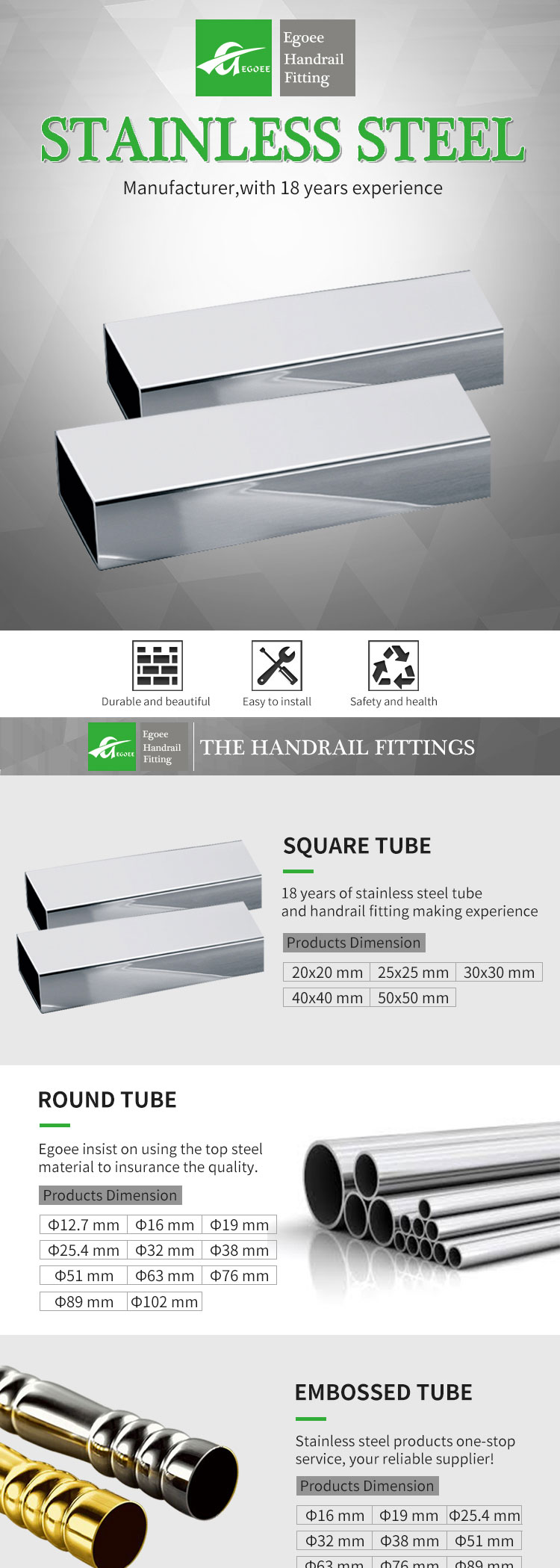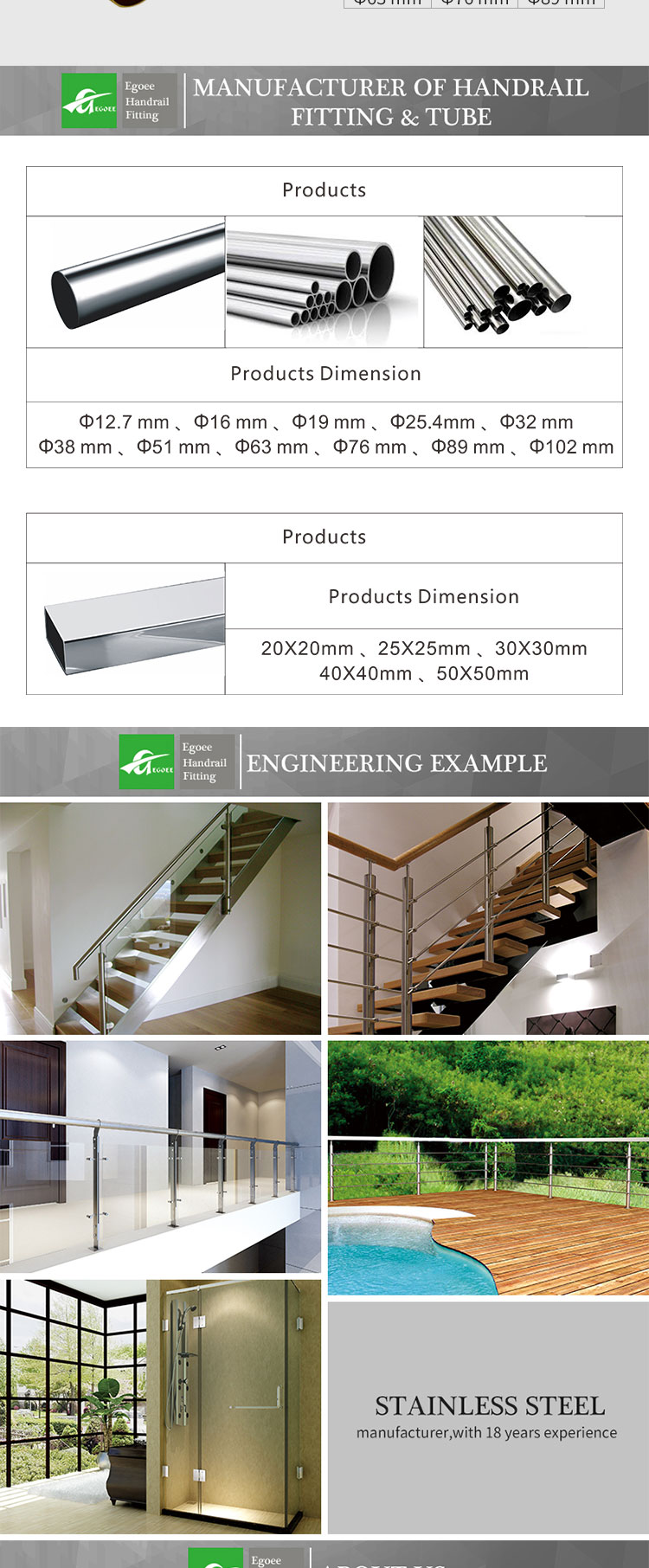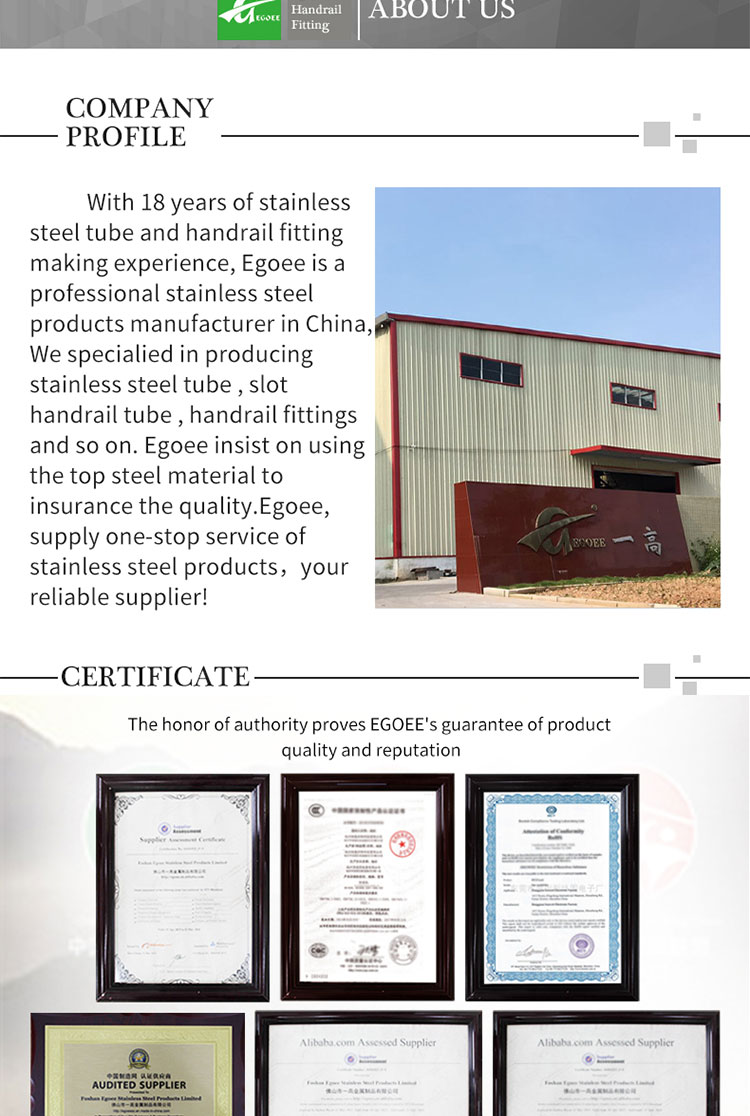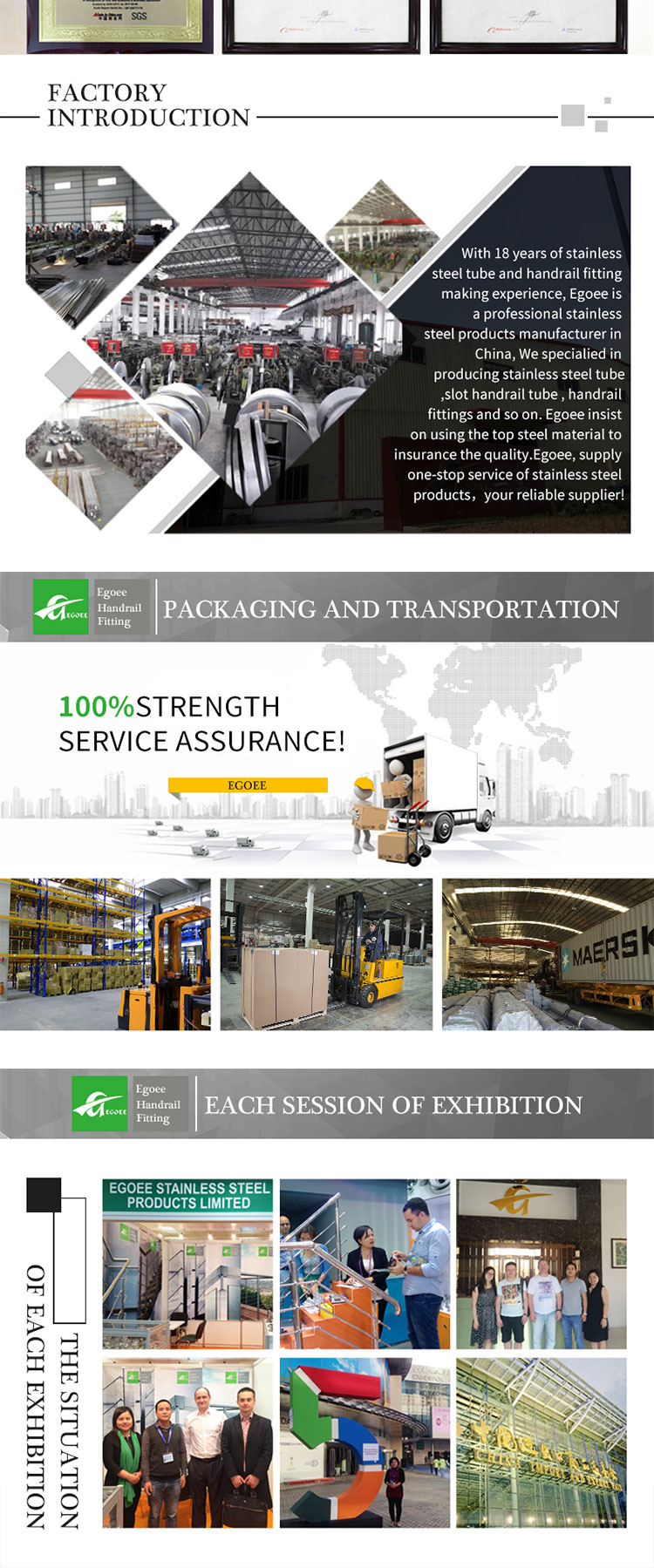The requirements for stainless steel pipes for railings are as follows:
Material: Stainless steel pipes for railings are usually made of 201 or 304 stainless steel decorative pipes. 201 stainless steel is mainly used for indoor railings, while 304 stainless steel is mainly used for outdoor railings.
Structure: There are three main structures of stainless steel railings: all stainless steel structure, glass stainless steel structure, and wooden stainless steel structure.
Thickness: The thickness of stainless steel pipes for railings should comply with national standards and specifications, and also depends on the diameter, shape and load-bearing capacity of the pipe. Generally, the thickness of stainless steel pipes for railings is 0.8mm to 1.5mm.
Height: The height of stainless steel railings should comply with design requirements and safety regulations. For railings with a height less than 24m, the railing height should not be less than 1.05m. For railings with a height of 24m and above (including high-rise residential buildings), the height of the railings should not be less than 1.10m.
Spacing: The spacing between stainless steel railing tubes should also comply with design requirements and safety regulations. The clear distance between railing members should not be greater than 110mm, and the distance between the lower horizontal tube and the floor or window sill should not be less than 50mm.
Connection: The connection between the stainless steel pipe for the railing and the wall or the ground should be strong and durable, and methods such as anchor bolts, expansion bolts, screws or welding can be used. There should be at least two anchor bolts at the connection point, and the material of the anchor bolts should be HPB235. The length of anchor bolts should not be less than 100mm




















































